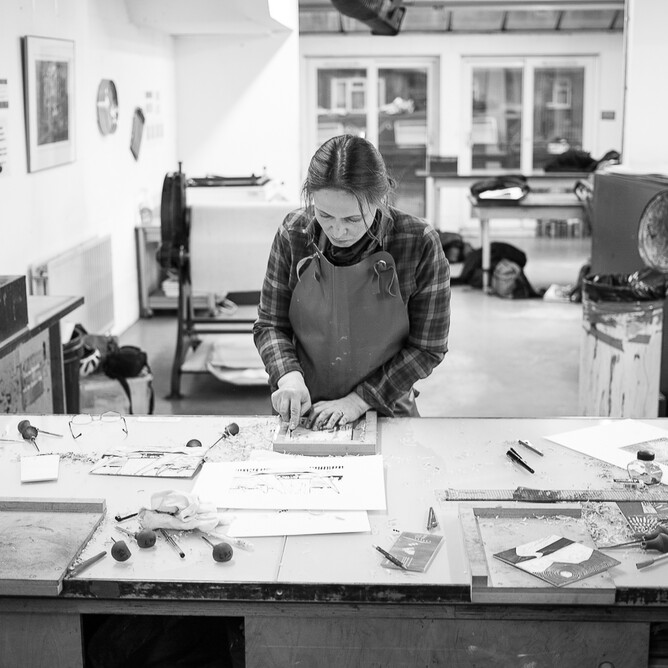Relief Printing Processes Explained
Making a wood engraving is a beautifully direct process - the surface of the wood is first carved, then inked-up and pressed against the paper. Engravings are made on the endgrain of a fairly small block - most commonly using boxwood or lemonwood. These woods are very slow growing, so much so that even after tens of years of growth, the biggest cross-section of wood can easily be held within the palm of one's hand. The dense nature of the wood, with its very close texture, allows intricate details to be carved. After the wood has been prepared, it's incredibly beautiful - warm to the touch but with a surface as smooth as marble. The cutting tools need to be razor-sharp, the blade-tip often being tested against one's thumbnail to check that they won't skid before making the first cut. The wood is precious and after a design has been made and been editioned the blocks may be resurfaced, ready for a new design.
To make a woodcut the design is cut into the sidegrain of larger pieces of soft Japanese plywood. This process allows the grain of the wood to be seen - a wavy pulse of nature in the background of everything. The images are 'reduction' woodcuts, an approach with poetic economy of means that requires one single piece of wood to be cut and printed three (or more) times over; so that at the end there's hardly anything left of the wooden printing plate. The print exists like a photograph to document the adventure of the process. These works are larger in scale, printed onto heavier paper.
Photograph & text by Jonathan Ashworth
Please visit here to book the next available dates for Woodcut or Wood Engraving!

